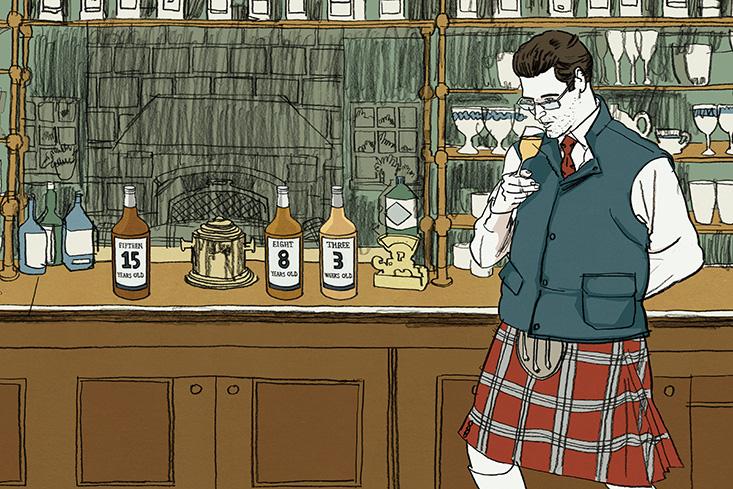From Nautil.us:
Whiskey Can’t Hide Its Age Either
Anxious distillers are trying to make bourbon old before its time.
n case you haven’t heard, doomsday is coming—more droughts, floods, famine, class warfare, entitled children, and, brace yourself: a bourbon shortage! Yes, traditional Kentucky distillers didn’t predict or prepare for this Mad Men-inspired mixology epoch. And if it continues on this trajectory, thousands of years from now geologists and archaeologists will be able to identify the bourbon-free era in the absence of fancy rectangular bottles in the remains of fallen civilizations.
That is, unless scientists can build a whiskey time machine, a way to gracefully cheat the slow aging process that offers bourbon its rich oaky tones and sweet and smooth finish.
The popularity of bourbon in the past decade has been a major high and hangover for American distillers. (The name “bourbon” is reserved for barrel-aged whiskeys made primarily of corn in the United States) In 2002, the U.S. sold 13 million cases of bourbon; in 2014, 19 million cases, generating $2.7 billion in revenue. But the popularity and the time bourbon takes to mature, paired with a shortage of new American oak barrels that traditional whiskeys are aged in, means there simply isn’t enough of the good stuff to go around. Evidence of a shortage is generally delivered in anecdotes, but in an independent opinion survey taken this year by Fred Minnick, booze blogger and author of Whiskey Women: The Untold Story of How Women Saved Bourbon, Scotch & Irish Whiskey, 82 percent of 149 high-end bourbon drinkers said they have been unable to find bourbons they once found.
Scientifically savvy distillers have already squeezed the slow aging process into months and weeks.It is the finest bourbons, those that are produced in limited supply and aged for 12, 18, or more years that have been the hardest to find in the past several years. Drinkers with deep pockets have bought up much of the limited release bourbons from well-established companies—Van Winkle, Buffalo Trace Antique Collection, Four Roses Limited Editions—explains Lew Bryson, the managing editor of Whisky Advocate magazine. “Having cleared them off the market, they’ve now started in on lesser-known bourbons, almost in a panic-buying mode, buying multiple bottles of whiskeys they feel sure will simply disappear.”
It’s a frightening prospect.
Enter entrepreneurs with start-up spirits and a potential solution. Through a variety of unconventional aging methods, drawing on chemistry, they have already squeezed a two- to more-than-20-year process into days, weeks, and months, much to the chagrin of whiskey connoisseurs, who will tell you the secret to a refined bourbon is time. While some companies have taken age labels off their bottles to get products to market sooner (bye-bye 12-year-old premium bourbon; hello ambiguously aged premium bourbon), new distilleries are experimenting with smaller barrels and rapid oxidation.

The magic that turns harsh ethanol, the product of distillation, into a sophisticated sip of smooth bourbon with undertones of vanilla and caramel happens when young alcohol meets oak barrel. Whiskey aging traditionally starts when an oak barrel is charred, breaking down the lignin in the wood into organic compounds called aldehydes, explains Scott Spolverino, an industry consultant with a degree in brewing and distilling science from Heriot-Watt University, in Scotland. “These are the main building blocks of maturation.” When you add alcohol to the barrel, oxidation transforms the aldehydes into acids—syringic acid (from syringaldehyde), ferulic acid (from coniferaldehyde), and vanillic acid (from vanillin). During the aging process, changes in heat and pressure push and pull the alcohol in and out of the wood. There is a constant back-and-forth between aldehyde and acid, until the acids accumulate en masse and turn permanently into esters, adding complex character and deep flavors....MORE